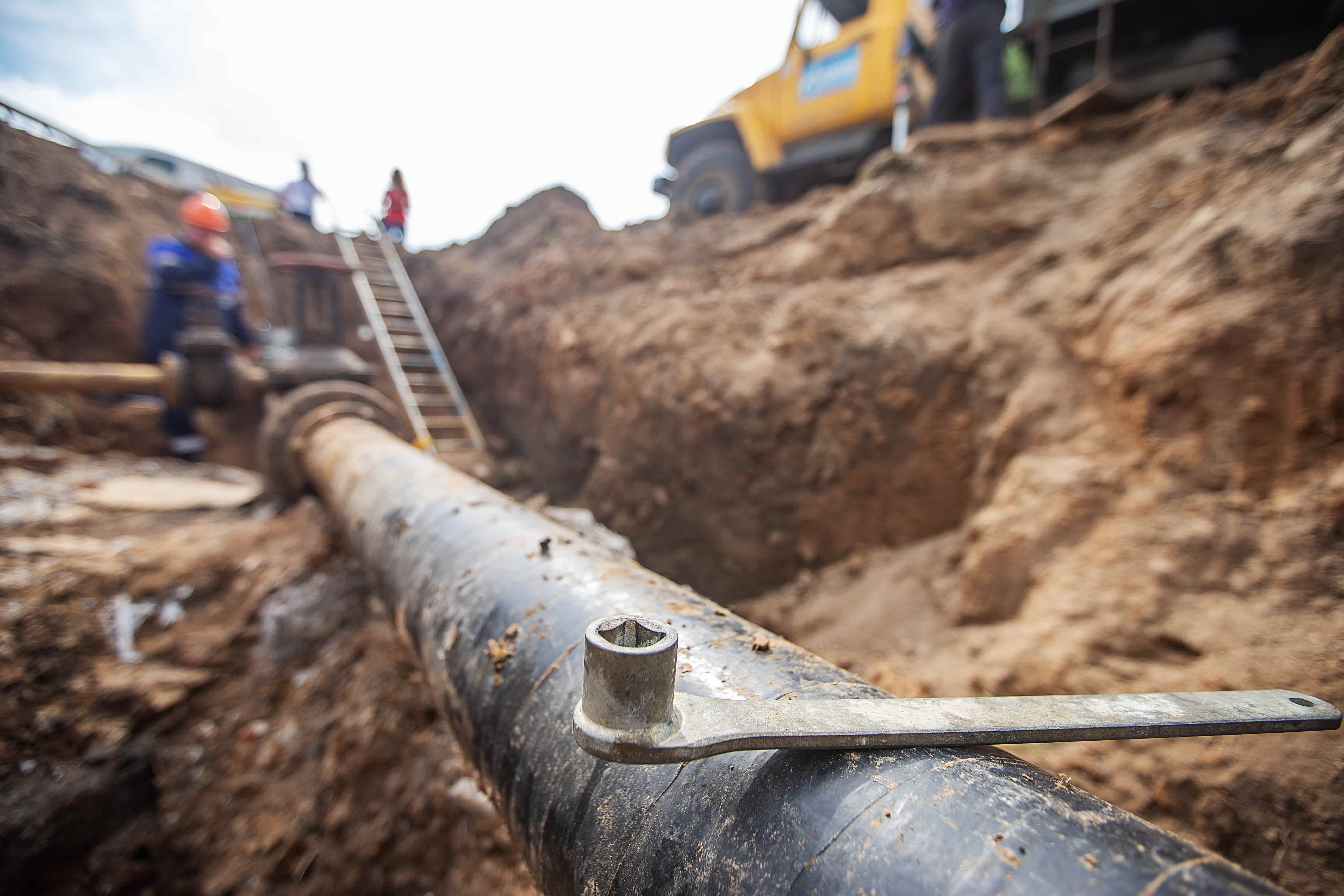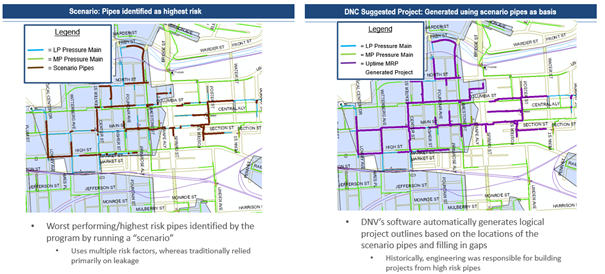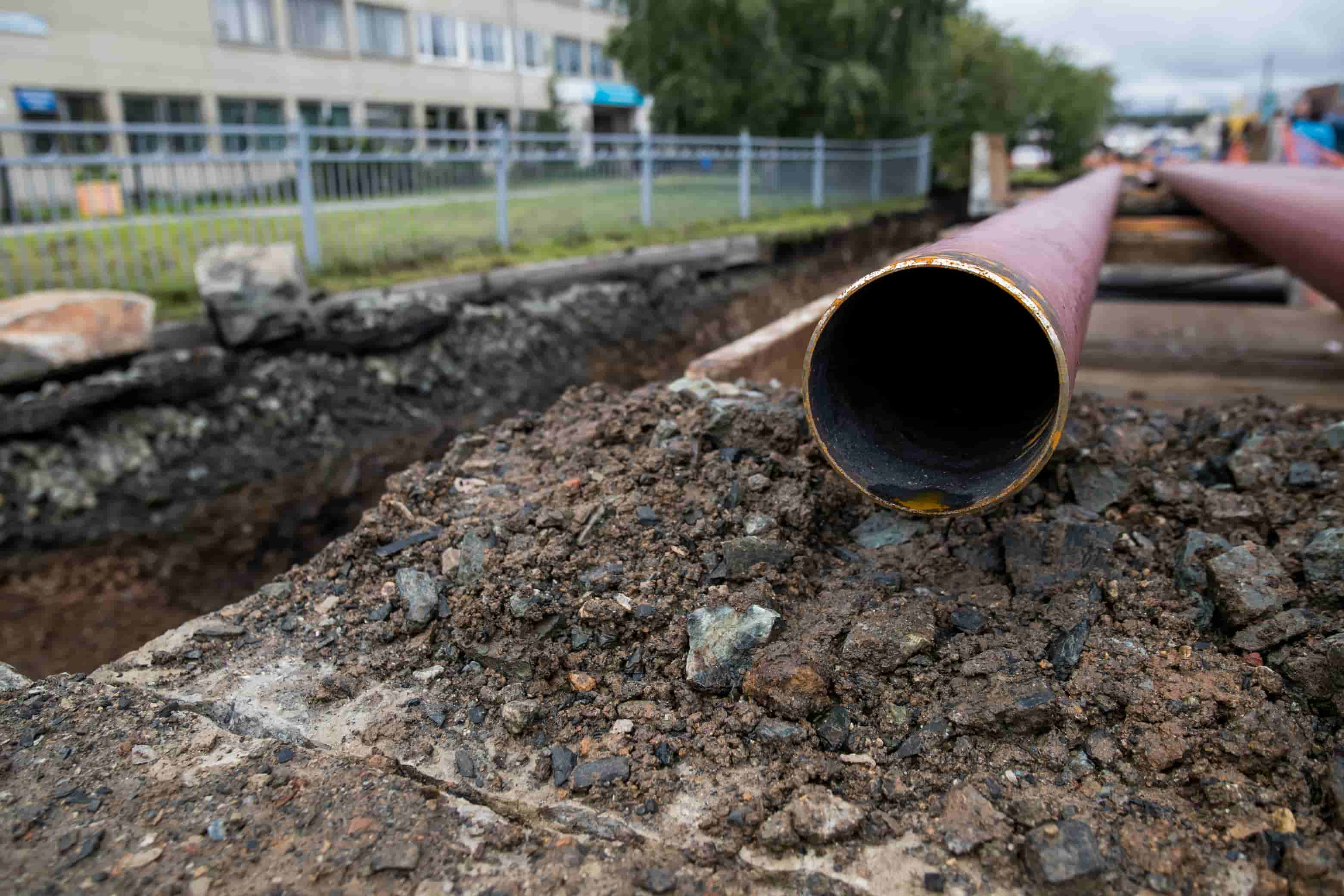Transforming gas system modernization programs: Shifting from relative risk to probabilistic risk to drive replacement planning
DNV enables risk-informed asset management based on the probabilistic, quantitative likelihood of failure and consequence of failure results for every asset class within a utility.
In the heart of the energy industry's evolution lies a critical challenge: ensuring the safety, reliability, and efficiency of pipeline infrastructure amidst ageing networks and dynamic regulatory landscapes. For utility companies worldwide, this challenge is compounded by the need to optimize maintenance budgets while delivering uninterrupted service to millions of customers.
With some natural gas distribution systems dating back over a century in many parts of the world, the urgency of replacing ageing infrastructure has never been clearer. However, obstacles such as the high cost of replacement programs, the shortage of skilled labour, and regulatory structures pose significant hurdles.
Advanced Solutions for Asset Modernization Programs
To overcome these challenges, utility companies are turning to comprehensive risk-informed asset management solutions like Synergi Mains Replacement Planner (MRP) and Synergi Pipeline. Together, these tools form a powerful suite that empowers operators to estimate, manage, and mitigate risks accurately, leading to effective prioritization of asset replacement projects. This comprehensive approach equips operators with advanced risk assessment capabilities for proactive identification and mitigation of potential threats to infrastructure, all while optimizing maintenance budgets and prioritizing asset replacement projects and ensuring seamless service delivery to customers.
By incorporating standardized quantified risk assessments across all jurisdictions, utility companies gain a consistent understanding of risk levels across their entire network, facilitating informed decision-making and resource allocation. Moreover, the transition from relative risk models to a single probabilistic risk tool, which considers all ASME B31.8S threat types as required by RIN2, ensures a more comprehensive evaluation of risks, leading to more effective risk mitigation strategies. The integration of spatial analysis within the software allows utilities to consider dynamic changes in risk along pipeline paths, providing valuable insights for targeted risk management efforts and optimizing maintenance budgets.

Enhanced Risk Management with PRA Models
DNV’s Probabilistic Risk Assessment (PRA) Models and risk analytics are backed by extensive risk management experience, providing operators with actionable risk intelligence to efficiently extract critical knowledge regarding risk drivers and trends useful for decision-making. Real (verifiable) numbers are assigned to estimates to measure the probability of failure (PoF) and potential consequences for all isolated and interacting failure mechanisms, leading to a higher level of trust in risk results and the ability to verify data and program reliability.
A central part of using the probabilistic risk assessment model Is determining the impact of data uncertainties on risk. This allows integrity engineers and leaders to decide whether to drive mitigation programs for threats to assets or use the quantified uncertainty to prioritize and target locations for additional data digitalization or collection. The goal – minimize the data uncertainty in the risk calculations to ensure you are mitigating the right assets with no unnecessary inspections.
Excellence in Asset Replacement Prioritization: A case study
DNV has worked with one of the largest utility companies in the United States to support its commitment to modernize infrastructure, integrate cutting-edge tech, and safeguard its operational backbone. Through a strategic collaboration, DNV helped the operator implement advanced Pipeline Integrity and Risk Management solutions, including Synergi Pipeline with Probabilistic Risk Assessment (PRA) for DIMP (Distribution Integrity Management), TIMP (Transmission Integrity Management), Measurement Regulation and Compliance (MRC) and Supplemental Gas. This was complemented by Synergi Mains Replacement Planner (Synergi MRP) software for strategic replacement project planning.

The adoption of PRA models to drive asset replacement prioritization has notably eliminated uncertainty, empowering the company to make well-informed, data-driven decisions. The utility now optimizes resource allocation based on reliability mathematics by assessing risks in monetary terms and ranking them across asset classes. This strategic alignment of resources to areas of higher risk concentration has decreased system risk, streamlined maintenance budgets, and minimized replacement project costs. With diverse data inputs, both internal and external, the company generates risk scores for each asset based on PoF and Consequence of Failure (CoF), enabling seamless communication, comparison, and connection of risk results across diverse asset classes.
The utility’s shift to a more comprehensive risk approach hinged on standardizing risk assessments across all jurisdictions and broadening the focus from corrosion-related risks to encompassing all potential threats. The integration of quantified risk results and prioritization of risk mitigations directly informs their capital investment planning process, ensuring that plans are not only risk-based but also defensible to state regulators and ratepayers.
This strategic collaboration with DNV underscores a long-term commitment to excellence, with the operator benefiting not only from advanced software solutions but also from ongoing support and expertise. The utility's proactive stance in managing risks, embracing innovation, and ensuring the reliability and safety of energy delivery to its communities exemplifies its commitment to excellence.

Why choose DNV:
- DNV has a proven track record of providing best-in-class solutions with mature and proven models.
- DNV offers a unique combination of robust software and trusted industry leading expertise.
- DNV offers a comprehensive solution for risk-informed mains replacement planning based on the probabilistic, quantitative likelihood of failure and consequence of failure results.
What operators have gained by partnering with DNV for their asset modernization planning:
- Ability to transition from weak relative risk models to a single probabilistic risk tool that considers all ASME B31.8S threat types.
- Ability to incorporate spatial analysis within risk assessment to consider how risk changes along the pipeline path dynamically.
- Integration of risk rankings and prioritization of risk mitigations to improve efficiencies and planning.
- Reduced system risk, greater reduction in the trend of leaks and emissions, optimized maintenance budgets, and minimize unnecessary replacements.
- Increased ROI through maximized risk reduction per dollar spent.




